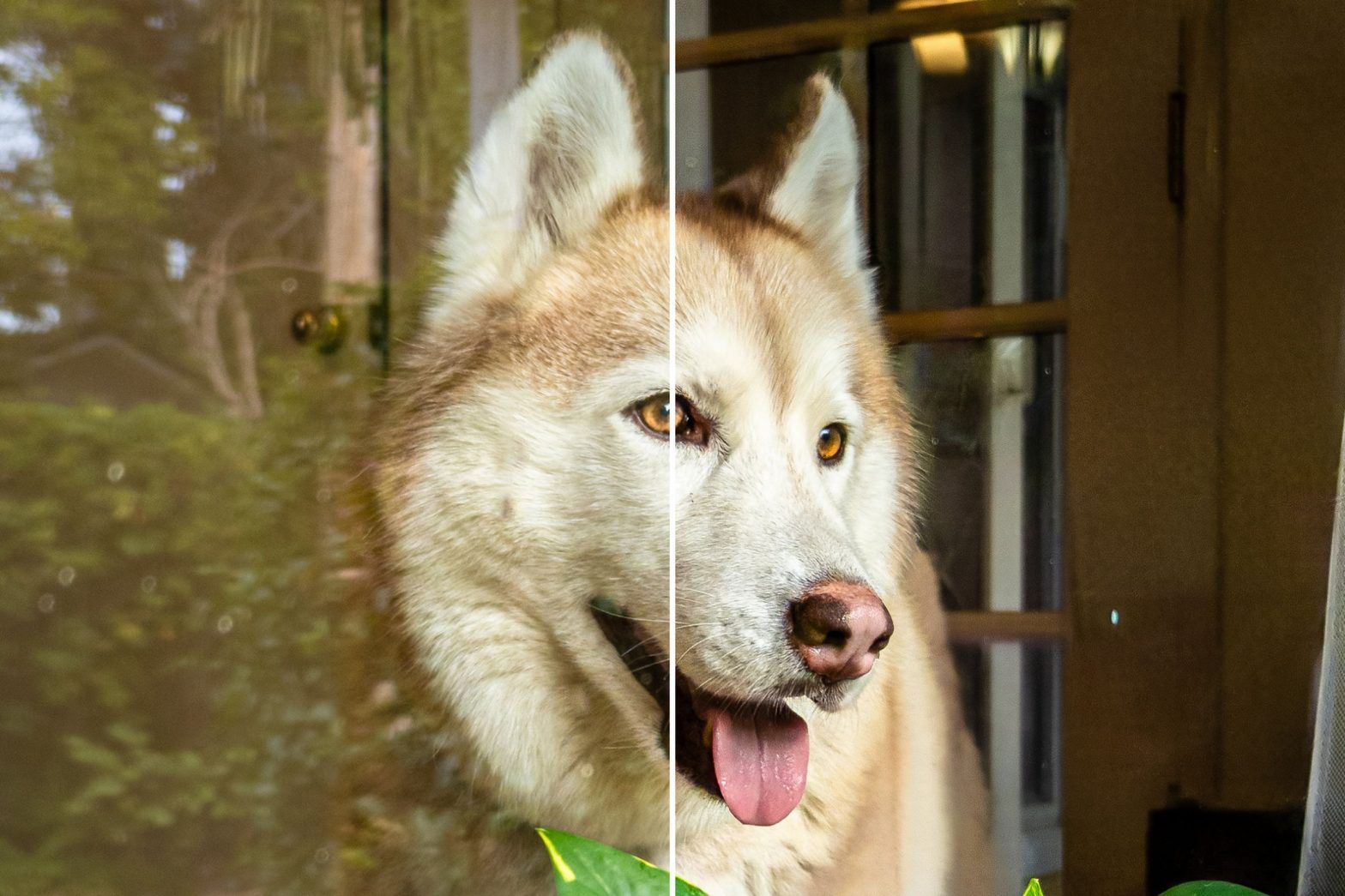/
11 experimental tools and features are being showcased at Adobe’s Max event that highlight exciting, creative uses for new generative AI and 3D technology.
Share this story
If you buy something from a Verge link, Vox Media may earn a commission. See our ethics statement.
:format(webp)/cdn.vox-cdn.com/uploads/chorus_asset/file/24994608/Adobe_reflection_removal_sneak.jpg)
Some of the most exciting developments announced during Adobe’s annual Max conference involve the company’s experimental technology previews, and this year is no exception. Eleven new AI-powered prototype tools and features are being showcased under the events “Sneak” program today, including an impressive video upscaler and Project Stardust — an “object-aware editing engine” teased last week that automatically identifies individual objects in photographs so they can be easily moved, changed, or deleted.
Adobe uses Sneaks to both showcase the future technologies it’s currently working on and gauge public interest that could direct how they’re developed going forward. Not every Sneak is destined to make it into Adobe’s product catalog, but many popular features like the Content-Aware Fill tool in Adobe After Effects can be traced back to Sneak previews.
More information about all of the new Sneaks will be available on Adobe’s website after the event, but for now, I’ve picked a selection of my favorites to spotlight below:
Project Stardust
:format(webp)/cdn.vox-cdn.com/uploads/chorus_asset/file/24978989/Screenshot_2023_10_05_112709.png)
:format(webp)/cdn.vox-cdn.com/uploads/chorus_asset/file/24979003/Screenshot_2023_10_05_112748.png)
We got a glimpse of Project Stardust last week when it was teased in a YouTube Short, but now we can see more of its capabilities. The tool automatically identifies each object in an image as though they’re on separate layers — allowing users to grab and move sections around without manually “cutting” them out with a lasso tool. The background behind removed objects is automatically filled in to match its surroundings, and you can even generate entirely new assets to place into the image, just like Photoshop’s text-to-image generator.
Project Primrose
:no_upscale():format(webp)/cdn.vox-cdn.com/uploads/chorus_asset/file/24994981/Project_primrose_gif.gif)
We’ve seen concept cars that feature color-changing paint technology, and now similar ideas are being worked into fashion. Project Primrose is an interactive dress (yes, a real dress and not some Photoshop feature) that demonstrates the potential use of “flexible textile displays,” allowing the wearer to display patterns and images on their body like a programable screen. Adobe has technically already teased this “smart display fabric” technology before, but we’ve only previously seen it applied to a flat canvas and a small handbag. As a dress, the numerous scale-like displays don’t look very practical, but it is cool, and this is hardly something you’d wear on your morning coffee run.
Project Poseable
Described by Adobe as a “breakthrough in AI-based image generation models,” Project Poseable allows Adobe’s text-to-image generators to interact with posable 3D models, which can be used to influence the final image results. The prototype tool also enables users to automatically pose 3D characters by uploading 2D reference images instead of moving sections of the model by hand. Purely from an illustration perspective, the latter sounds incredibly useful for transforming static photos into customizable 3D materials, allowing you to check poses you like from other angles and illuminate the model to reference realistic lighting.
Project Dub Dub Dub
Silly name aside, this is one of the most impressive AI audio features I’ve seen to date. Project Dub Dub Dub can automatically translate a voice recording or video audio track into an unspecified number of supported languages while retaining the original speaker’s voice. In other words, you can hear yourself being translated into French, German, Spanish, Arabic, and more, with the resulting dialogue automatically aligning to match how it was spoken in the original audio. Not only does that save oodles of time spent manually dubbing the video or audio content but it also reduces the need to hire external translation services — provided the final results are accurate, of course.
Project See Through
Have you ever taken a picture of someone through a window and wished there were an easy way to get rid of all the annoying reflections in the glass? Well, that’s exactly what Project See Through does. Adobe says that the See Through “dramatically simplifies” the removal process compared to manually cleaning up the image to remove obstructions. I can see this being a useful addition to programs like Photoshop or Adobe Express if it makes the cut.
